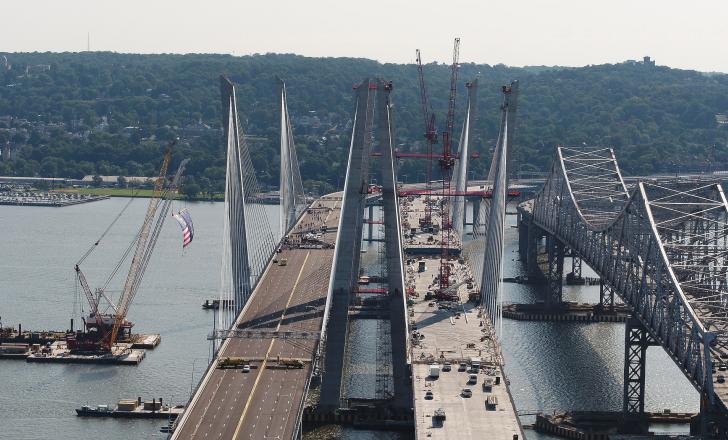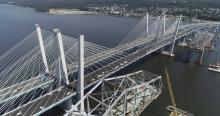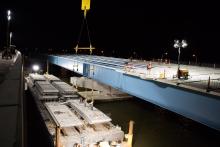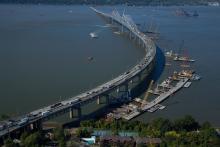
The first span of the 5km twin-span Governor Mario M. Cuomo Bridge - formerly the Tappan Zee Bridge - in New York opened August 25.
Tappan Zee Constructors, joint venture led by Fluor and including American Bridge, Granite and Taylor Bros., shift all four lanes of westbound traffic from the existing bridge to the new span overnight.
The four eastbound lanes will be shifted onto the new span in the autumn. Demolition of the old bridge can then get underway, allowing more room for construction of the adjacent second new span, said Hans Dekker, president of Fluor’s infrastructure business.
“We are proud of the Fluor-led joint venture team for advancing this landmark megaproject and look forward to building on this milestone to complete the second span next year,” said Dekker.
The client, New York State Thruway Authority, started building the cable-stayed bridge across the Hudson River between Westchester and Rockland counties in late 2013. When finished next year, it will be the largest bridge in New York State history.
The cable-stayed main span is supported by eight 128m towers, which stand at 5° angles and feature a sleek, chamfered design. The iconic towers support 192 stay cables, which are made up of nearly 7,900km of steel strands.
In final configuration, the Governor Mario M. Cuomo Bridge will carry eight general traffic lanes - four each on the westbound and eastbound spans - breakdown/emergency lanes, space for future bus rapid transit and commuter rail and an advanced traffic monitoring system.







